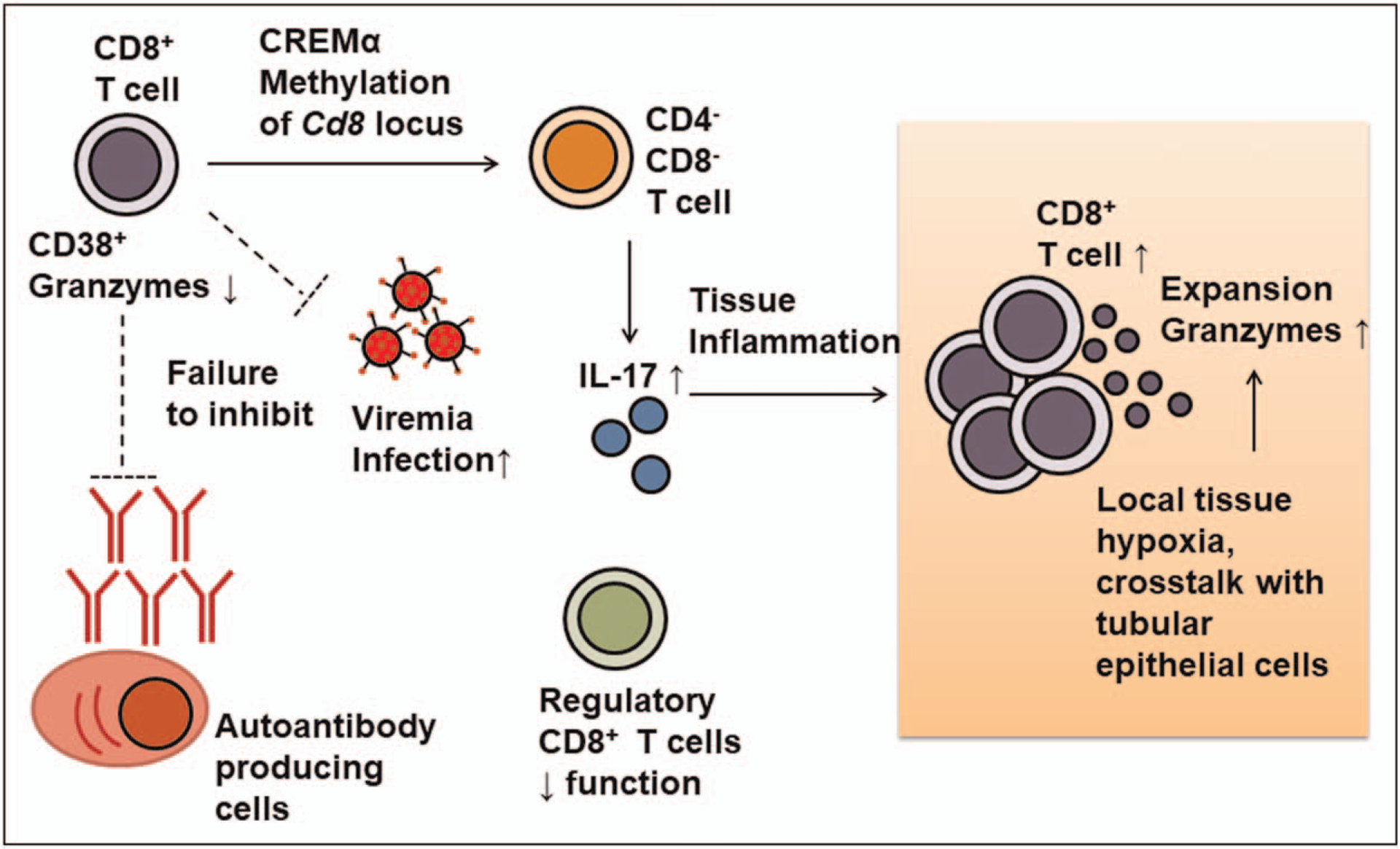FIGURE 1.

Immunopathology of various CD8+ T-cell subtypes and contribution to pathogenesis. Reduced cytolytic function of systemic CD8+ is related to the expanded CD38+ subpopulation and correlates with the increased risk of infection. Functional defects of cytotoxic T cells also result in failure to remove autoreactive B cells and thus increase autoantibody producing cells. Functional defects in regulatory CD8+ T cells also contribute to the loss of peripheral tolerance. Meanwhile, methylation of Cd8 locus through cAMP-responsive element modulator α and the inflammatory milieu lead to generation and expansion of IL-17-producing CD4−CD8−double negative T cells. Tissue infiltrating CD8+ T-cell cause tissue damage as a result of exposure to changes in tissue metabolic factors, such as hypoxia and arginine levels.
